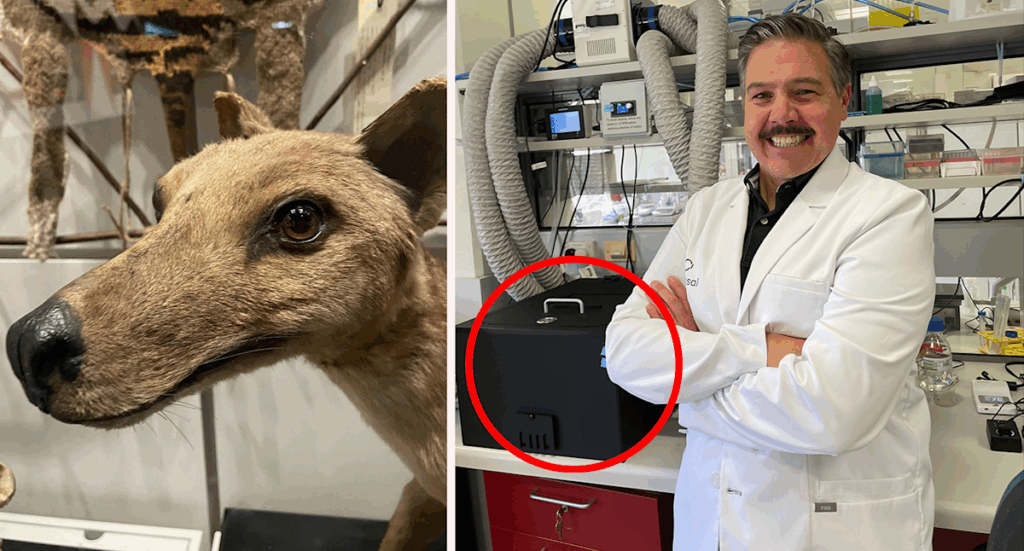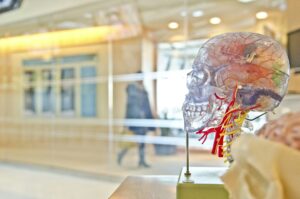
Investment by Colossal Biosciences into an Australian lab to help recreate extinct animals could have major ramifications for living species, including humans. The Texas-based biotech company, known for its ambitious de-extinction projects involving the Tasmanian tiger, woolly mammoth, dodo, and moa, is expanding its research facilities at Melbourne University. This expansion is bolstered by a substantial US investment, reportedly in the eight-figure range, and marks a significant step in the global effort to bring extinct species back to life.
Professor Andrew Pask, a charismatic scientist and the new Chief Biology Officer of Colossal Biosciences, will oversee the development of cutting-edge technologies such as artificial wombs. Speaking to Yahoo News Australia, Pask highlighted the critical importance of this investment, noting that Australia has the highest extinction rate of mammals in the world. “The risk to our wildlife in particular is extreme,” he said, emphasizing the urgency of the situation.
Australia at the Forefront of De-Extinction Efforts
The announcement comes as Australia becomes a central hub for efforts to bring animals back from extinction and protect those on the brink. The focus is not only on resurrecting lost species but also on using advanced genetic technologies to protect existing ones from threats like climate change and invasive species. This dual approach could have profound implications for biodiversity conservation worldwide.
Professor Pask explained that while de-extinction is “enormously expensive,” the immediate impact of Colossal Biosciences’ scientific advancements will be on altering existing species to enhance their resilience. Techniques being developed could help species adapt to changing weather patterns or resist diseases, potentially saving them from extinction.
Thylacine Technology and Its Broader Implications
The DNA engineering technologies developed for the Tasmanian tiger project are already being applied to other species. One such application is the creation of genetic resistance in the northern quoll, a rare marsupial threatened by the spread of invasive cane toads. “It’s predicted to go extinct in the wild within the next 10 years if we can’t make these [gene] edits and get our animals out there,” Pask warned.
Additionally, the team is working on genetically engineering frogs to resist the deadly chytrid fungus, which has already caused the extinction of several Australian species. “Colossal is really moving the needle in terms of the conservation space,” Pask said, underscoring the transformative potential of these technologies.
Restoring Ecosystems and Reviving Lost Species
The move represents a significant shift in conservation strategies, focusing not only on preserving existing biodiversity but also on restoring ecosystems by reintroducing extinct species. The thylacine, in particular, is seen as a key species due to its role as an apex predator. Its extinction has left a gap in the ecosystem, leading to imbalances that have affected other species, such as the Tasmanian devil.
Professor Pask is driven by the potential to restore damaged ecosystems and has expressed interest in bringing back other extinct Australian species, like the pig-footed bandicoot and the Toolache wallaby. The latter was recently seen in color film for the first time, highlighting the ongoing interest in these lost species.
Innovative Technologies for Conservation
Under the new agreement, Melbourne University’s Thylacine Integrated Genomic Restoration Research Lab (TIGGR) will be renamed Colossal Australia, with revamped laboratories to support groundbreaking research. The investment will facilitate the development of artificial gestation technologies, including artificial wombs, which could revolutionize conservation efforts.
These artificial wombs, described by Pask as “mind-blowing,” could be a game changer for rearing and releasing depleted species back into the wild. They hold the potential to rapidly regenerate populations of animals affected by natural disasters, such as the Black Summer Bushfires, which devastated koala populations.
“After we’ve had a catastrophic bushfire or flood, we would be able to create 1,000 koalas with the exact genetic diversity from a particular region and then rear them without the need for having surrogate mums in captivity to rear them,” Pask said.
Potential Human Health Applications
While the primary focus is on conservation, the technologies being developed could also have significant implications for human health. Artificial wombs could eventually assist in the gestation of livestock species, helping to address food security challenges. Furthermore, they could offer solutions for human preterm birth, providing a safer environment for prematurely born infants.
Bringing back birds poses additional challenges, as genetically engineered cells cannot yet be converted into living birds. However, research on artificial wombs has progressed with species like dunnarts, pigs, and mice, suggesting a promising future for these technologies.
As Colossal Biosciences continues to push the boundaries of what’s possible, the world watches with anticipation. The potential to alter the course of extinction and enhance biodiversity conservation could redefine our relationship with nature, offering hope for a more sustainable future.







